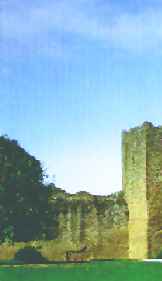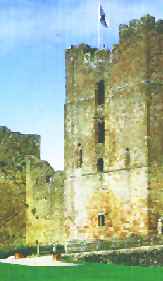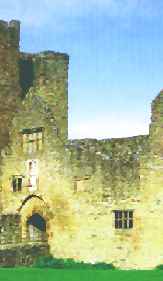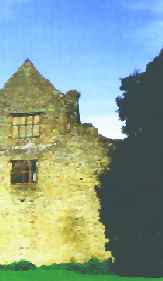It was from Ludlow that in 1483 the young heir to the throne, Edward,
set out on a fateful journey to London after the unexpected death of his father,
Edward IV. Within weeks the boy's uncle was crowned as Richard III, and Edward
and his little brother vanished.
Ten years later the heir to the new Tudor dynasty, the sickly young Prince Arthur,
brought his bride Catherine of Aragon home to Ludlow Castle. Arthur died at
the castle within six months, leaving the way open for his brother to succeed
to the throne as Henry VIII.
In 1634 the first enactment of a masque by John Milton, Comus, took place
in the Great Hall, while today the castle is the centre piece of a play by Shakespeare
and other events at the Ludlow Festival in June and July each year. |





